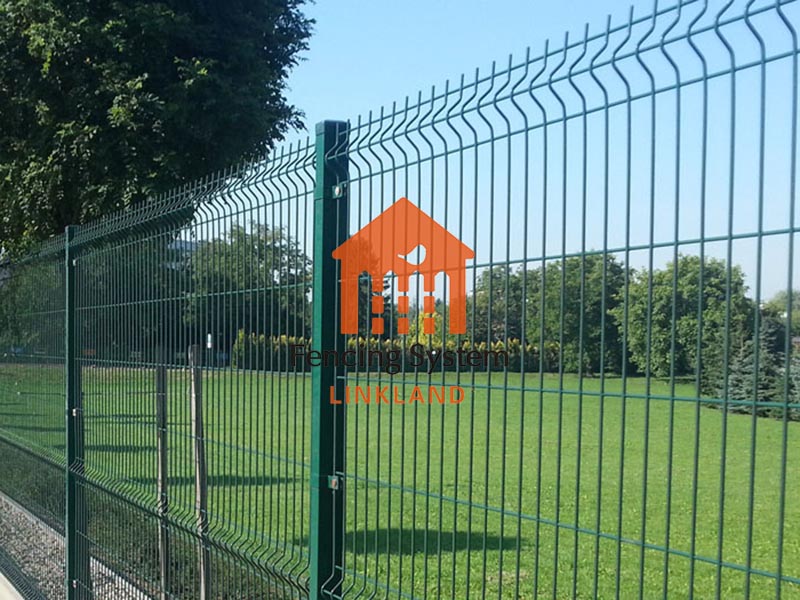Framework
A 3D fence is made up of multiple components, the most important of which is the frame structure. Frames are usually made of metal materials such as steel or aluminum alloy, which are characterized by their strength. The main role of the frame is to provide support and stability to the fence, ensuring that it can withstand external forces and pressures. A frame usually consists of columns, beams, and transverse connectors that are interconnected to form a stable structure.

grid panel
Another important component of a 3D fence is the mesh panel. Mesh panels are composed of metal strips or wires to create a fence surface with a mesh structure. These grid panels are usually prefabricated and attached to the frame structure by welding or fixing. The design and structure of the mesh panels determine the transparency and visual impact of the fence while also providing a level of security and privacy.

Connectors and Accessories
In order to ensure the stability and integrity of the fence, 3D fence also needs connectors and accessories. Connectors are used to connect different parts of a frame structure, such as connecting columns and beams, or connecting different mesh panels. These connectors are usually fixed by means of bolts, nuts or welding. In addition, accessories such as door latches, door locks and door hinges are also important components of 3D fences, which are used to provide access control and security.

Surface Treatment and Decoration
The component connection of 3D fence also involves surface treatment and decoration. In order to protect the fence from corrosion and oxidation, the frame structure and grid panels are usually treated with anti-corrosion treatment, such as galvanized or sprayed with anti-corrosion coating. In addition, the appearance decoration of the fence is also one of the considerations. Different colors and textures can be selected according to the needs to meet the requirements of aesthetics and coordination.
By understanding the component connections of a 3D fence, including frame structures, mesh panels, connectors and accessories, as well as surface treatments and finishes, we can better understand the construction and function of such fences. Proper connection and fit of these components ensures the stability, safety and aesthetics of the fence, making it a common choice for boundary definition, security protection and decorative effect. Whether in residential, commercial or public domains, the connection of components of a 3D fence plays a vital role.